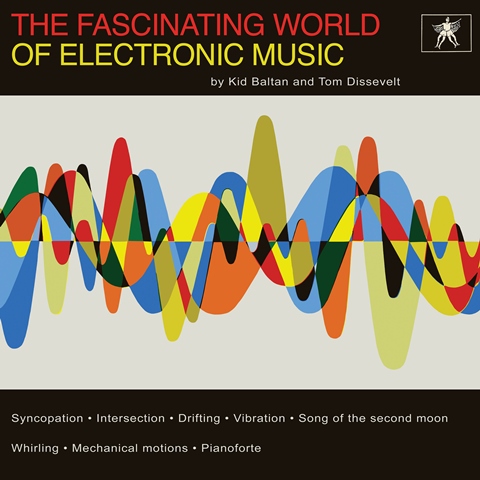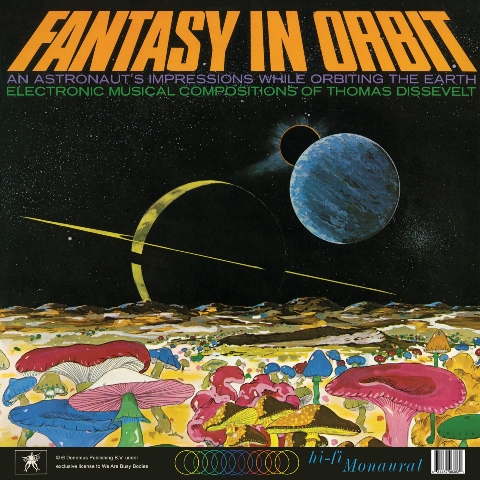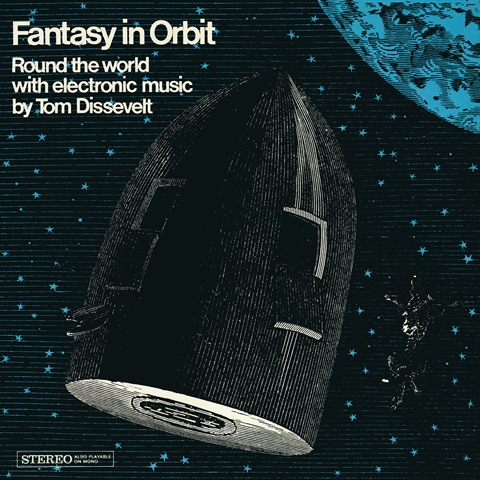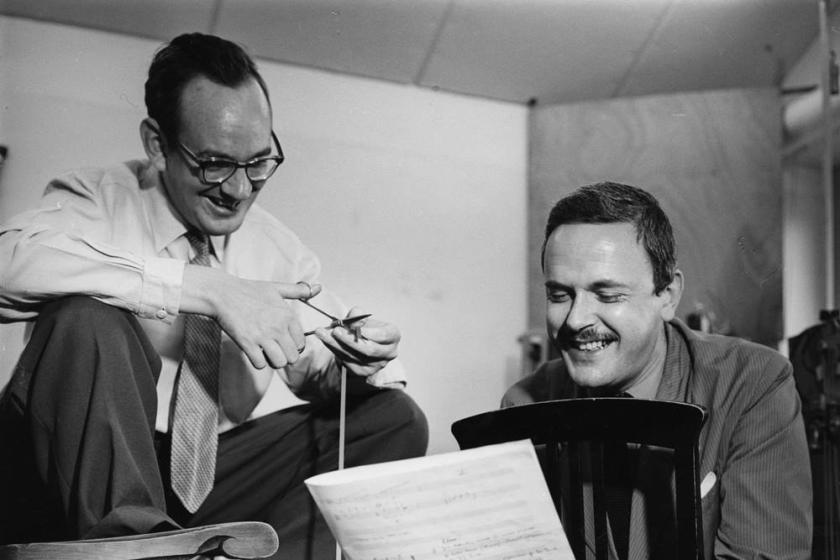In 1957, popular music was given a jolt when the first electronic pop record was recorded. “Song of the Second Moon” was created and composed by the Dutch musician Dick Raaijmakers who was working at NatLab, the research laboratory of the electronics company Philips.
“Song of the Second Moon” was based around a rhythmic pulse, and incorporated tape manipulation and multiple Ondes Martenots. It predicted the bubbling sound which became associated with Jean-Jacques Perry and presaged the machine beat Giorgio Moroder incorporated into his Donna Summer productions. It is also echoed by the 1962 British single “Time Beat”, which the BBC’s Radiophonic Workshop made with George Martin. It was the sound of the future. Raaijmakers was years ahead of anyone else.
 He first encountered electronic music in 1956 when Henk Badings came to NatLab to record music for a ballet production of Kaïn en Abel. Suitably stimulated, thoughts at Philips’s management turned to how this could be reframed in a pop context. Dick Raaijmakers was given the brief. “Song of the Second Moon” – originally titled “Electronic Rumba” – and a version of “Colonel Bogey” were the result.
He first encountered electronic music in 1956 when Henk Badings came to NatLab to record music for a ballet production of Kaïn en Abel. Suitably stimulated, thoughts at Philips’s management turned to how this could be reframed in a pop context. Dick Raaijmakers was given the brief. “Song of the Second Moon” – originally titled “Electronic Rumba” – and a version of “Colonel Bogey” were the result.
A single with both tracks was pressed – 2000 copies were manufactured. Raaijmakers adopted the name Kid Baltan for the project. He was known as NatLab Dik, so reversed the letters for this venture as a recording artist.
However, the composer of “Colonel Bogey” objected to the radical treatment and the record never reached shops. Copies were given out as promotional items by Philips to associates and clients. Then, in 1959, “Song of the Second Moon” emerged on the album The Fascinating World Of Electronic Music, which featured music credited to Kid Baltan alone and jointly to Baltan and his collaborator Tom Dissevelt, a composer, multi-instrumentalist and jazzer who had recorded for Philips. During 1958 and 1959, Dissevelt became increasingly fascinated by Boulez, Webern and Stockhausen's Kontakte. Philips directed him towards NatLab, where he swiftly began working with Raaijmakers.
Dissevelt was amongst the first – perhaps the first? – musicians with a popular music background to recognise the potential of electronics and incorporate them into his world. Later, in 1963, he recorded the electronic album Fantasy In Orbit, which was issued in different sleeves for its mono and stereo editions.
 There’s much more than this to the story of Dick Raaijmakers (aka Kid Baltan) and Tom Dissevelt. It was largely obscure until 2004, when the Dutch label Basta issued the incredible box set Popular Electronics which collected the complete works of Raaijmakers/Baltan, Dissevelt and Badings's ballet music. The Fascinating World Of Electronic Music and Fantasy In Orbit were collected in the set.
There’s much more than this to the story of Dick Raaijmakers (aka Kid Baltan) and Tom Dissevelt. It was largely obscure until 2004, when the Dutch label Basta issued the incredible box set Popular Electronics which collected the complete works of Raaijmakers/Baltan, Dissevelt and Badings's ballet music. The Fascinating World Of Electronic Music and Fantasy In Orbit were collected in the set.
Both albums are reissued as stand-alone vinyl releases. Fantasy In Orbit has become a double album – the mono and stereo versions are housed in a single sleeve, each side bearing one of the two front covers (pictured above left and below right). Flip the sleeve for either the mono or stereo cover. Potential buyers should be aware that with both records what was Side One has been mastered as Side Two, and vice versa (the matrix numbers confirm this: what’s incised in the run-off as A is actually B and it's the reverse on the other side). So what’s labelled as Side One plays the music for Side Two, and vice versa for both albums. Flip the records to hear what was originally intended. Neither album has liner notes (Fantasy In Orbit has an insert reproducing the annotation from the back of the original album’s sleeve), a substantial omission considering these important albums require contextualisation and explanation. The story of Dick Raaijmakers (aka Kid Baltan) and Tom Dissevelt is not told. The oversights are disappointing.
 Despite the inclusion of “Song of the Second Moon”, The Fascinating World Of Electronic Music is the more Avant Garde of the two albums. “Pianoforte”, credited to Baltan alone, is akin to Pierre Schaeffer’s musical investigations while the rest of the album explores how electronics can be incorporated into – and affect – standard musical arrangements. A terrific album.
Despite the inclusion of “Song of the Second Moon”, The Fascinating World Of Electronic Music is the more Avant Garde of the two albums. “Pianoforte”, credited to Baltan alone, is akin to Pierre Schaeffer’s musical investigations while the rest of the album explores how electronics can be incorporated into – and affect – standard musical arrangements. A terrific album.
Fantasy In Orbit is from four years later. Dissevelt’s premise was to create the soundtrack to a fictive musical documentary of the earth as seen from space by an orbiting astronaut. This electronica edges into outer limits of easy listening. Australia is represented by a version of “Waltzing Matilda”, the Atlantic Ocean by a series of wave patterns. Another terrific album.
The Fascinating World Of Electronic Music and Fantasy In Orbit have to be heard. Their reappearance is welcome. But it would have been nice if the issuing label had gone further in their efforts to reintroduce shops to these landmark records.
- Next week: U-Roy’s Version Galore
- More reissue reviews on theartsdesk
- Kieron Tyler’s website















Add comment